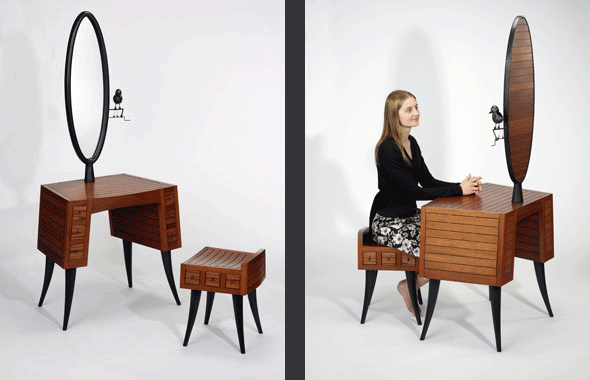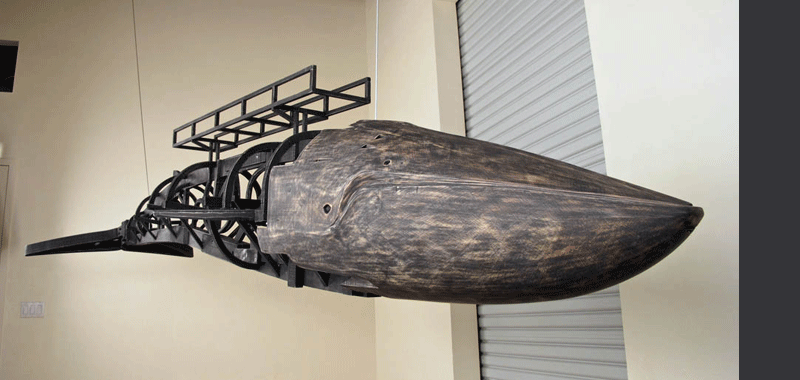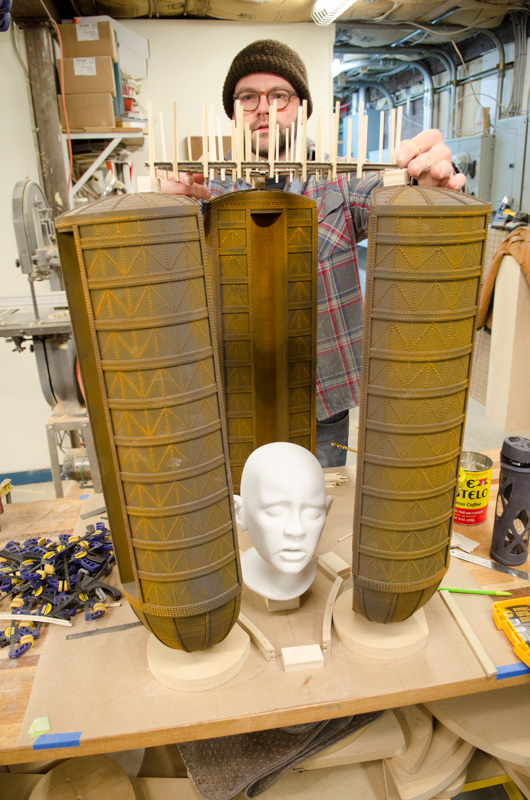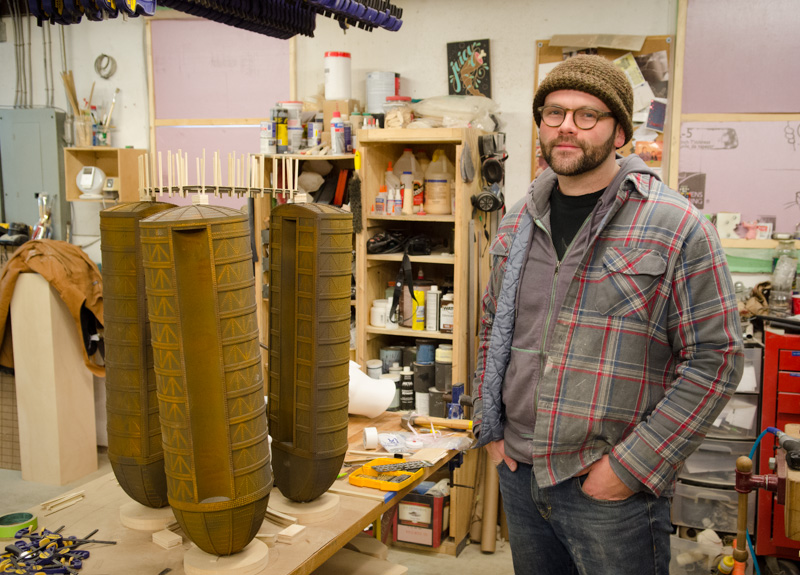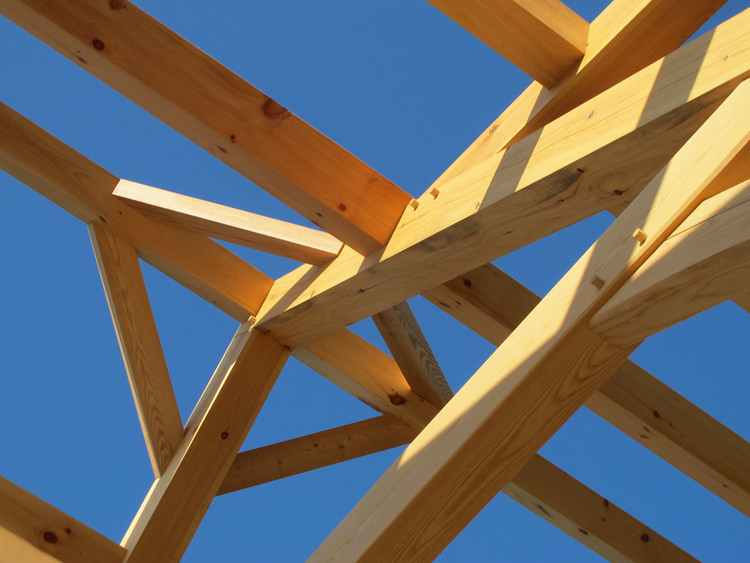
“My first frame was raised by hand with a group of a dozen friends, and by the end of the day limitless space was bounded by posts and rafters into the shape of a house. I was bewitched.” So Raivo Vihman describes his first experience constructing a timber frame.
Looking at the many timber frames Raivo has designed and built since, it’s not hard to see the appeal. His structures are at once graceful and solid, intricate and beautifully simple. Together, the wooden beams take the familiar shape of a house or a barn, but individually their knots and exposed grain still speak of nature. His structures are built with wood in the truest sense of the word—each beam is unique, and each one gives something of itself to the frame as a whole. For Raivo, even after years of building, every new timber frame is an opportunity: “It’s still about the act of creation, the interplay between aesthetic grace and functional design, and the beauty hidden in the wood.”
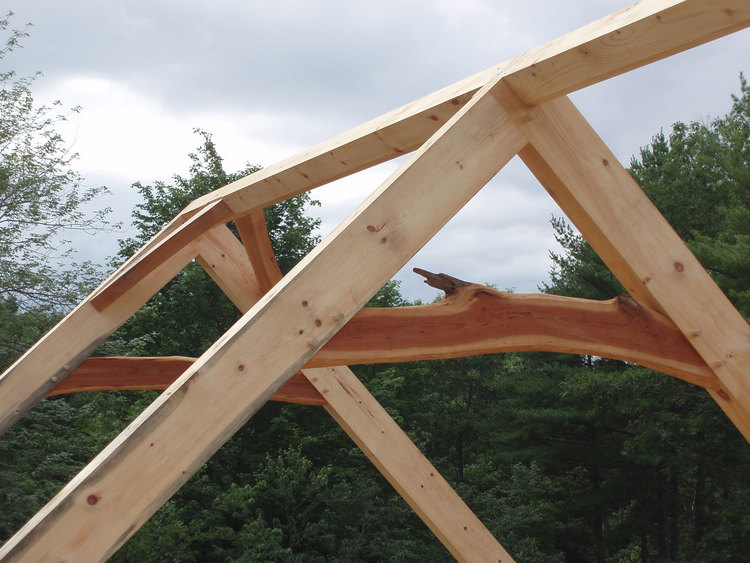
This spring, Raivo will be here at Penland to share his craft—and his love of his craft—with students in Timber!, an eight-week timber framing concentration. Like all Penland workshops, Timber! will be an opportunity to gain technical skills, a deeper understanding of materials, and exposure to new ideas. What makes it extra special is that students in the workshop will come together to build an enduring structure on campus. The resulting timber frame will reflect each of the students who’s hands worked to build it, as well as the Penland landscape it will become a part of.
In fact, the structure has already been set into motion. In spring of this year, Raivo was at Penland preparing wood. He and his studio assistant (and former Penland resident artist) Tom Shields stacked dozens of fir, pine, and cypress beams under temporary roofs. The beams have been curing so that they will be ready to frame come next spring:
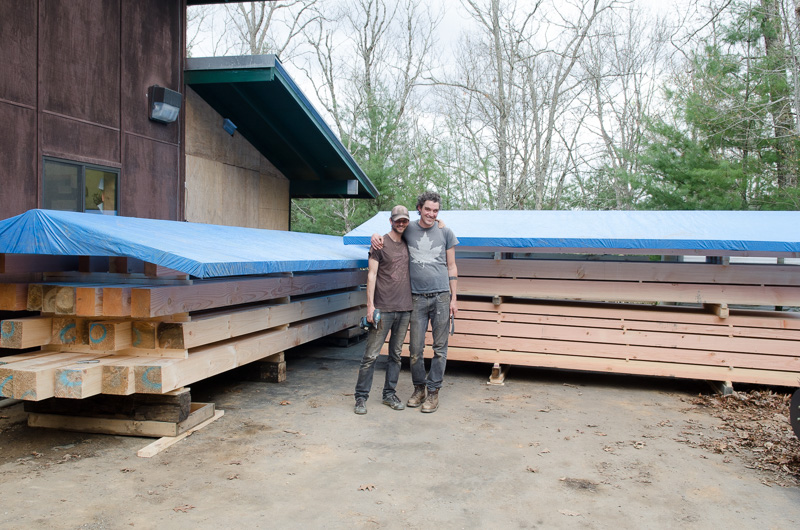
Raivo also cut a number of beams from the woods right here at Penland. He wanted the structure to include local trees, and he wanted to incorporate pieces into the design that have natural curvature to them. With the help of some eager Penland volunteers, those logs, too, are awaiting next spring:
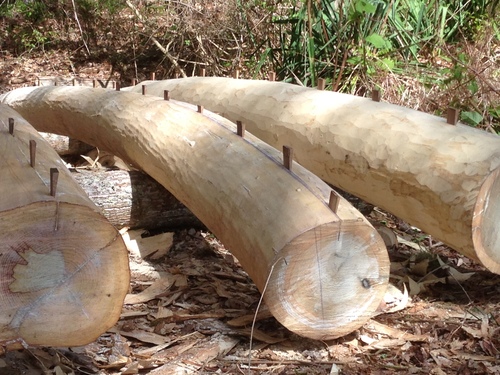

“The class will be tailored to student interests,” Raivo says. He has structured it to introduce students of all levels—from complete beginners to experienced builders—to the details of timber framing. The workshop will move through the complete process of designing and raising a frame, from drafting plans and building models to working with hand tools and different species of wood. For anyone like Raivo who is fascinated by the potential for both beauty and function in this type of building, Timber! will be an invaluable eight weeks.
Register now for Timber!, which will run March 13 – May 6, 2016. Scholarships are available for the course. Scholarship applications are due November 28, 2015.
Timber!
Raivo Vihman – In this workshop we’ll delve into traditional carpentry as we cut, join, and raise a timber-framed structure that will become a permanent part of the Penland campus. We’ll explore various approaches to timber preparation, layout, joinery design and execution, and compound-angle joinery. We’ll also cover scribing techniques as we incorporate round logs into the structure of the frame. Students will begin by designing and building their own timber sawhorses and will leave the class with the skills needed to design and build their own timber frames. All levels. Code S00W
Carpenter, founder and proprietor of Haystack Joinery (ME); teaching: Waterfall Arts (ME), Miljandi Cultural Academy (Estonia).
Penland Spring Concentrations, March 13 – May 6, 2016
Books | Clay | Glass | Iron | Metals | Textiles | Wood



